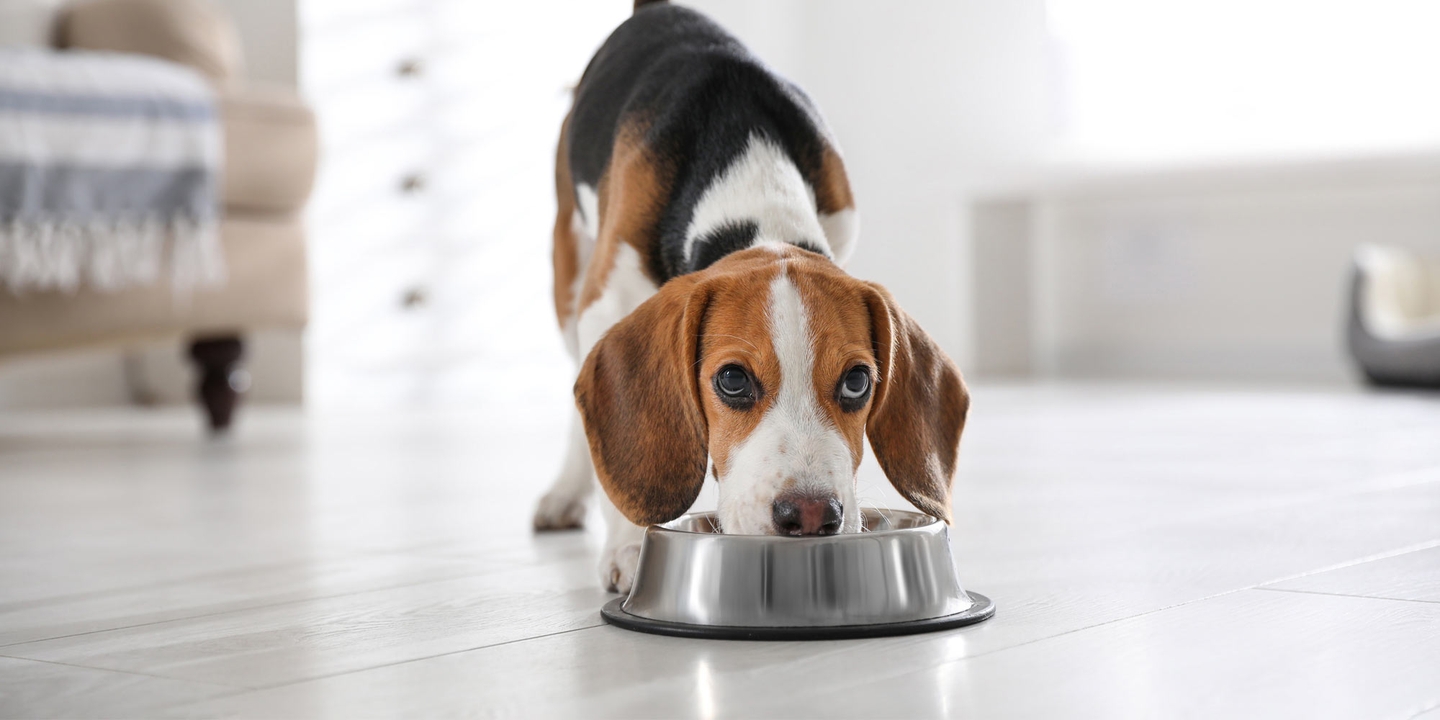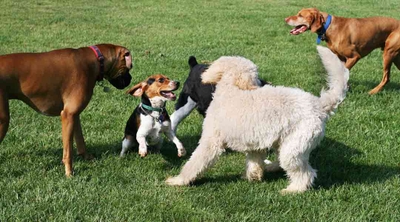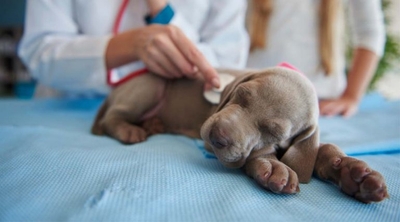When to switch a puppy to dog food
3 min read
Watching your puppy grow and change can be such a delight. Every milestone — from losing baby teeth to socialization and training — is important. One of those big milestones is transitioning to adult dog food. But how do you know when to switch your puppy to dog food? This guide will help you know how to successfully navigate your puppy through that big transition in his adorable life.
What is the difference between puppy and adult dog food?
Puppies have different nutritional needs from adult dogs. Since they’re using up a lot of energy to grow their little bodies, they need more calories and nutrients in every bite. According to standards set by the Association of American Feed Control Officials (AAFCO) — which regulates dog food manufacturing — the minimum amount of crude protein in dry puppy food is 22%, compared to 18% for adult diets. Puppy food also has more amino acids, fat, and minerals than adult dog food. Some brands even add extra omega-3 fatty acids to puppy food to help with brain and eye development.
On top of all of this, large-breed puppies have additional special needs. Their food might have a bit less calcium, phosphorus, and fat than other puppy foods, in order to help them grow at a healthier rate and avoid orthopedic issues. Your veterinarian can help you decide which food is best for your puppy — especially when it’s time to consider puppy versus adult dog food.
How long should a puppy eat puppy food?
There’s no “one size fits all” age for exactly when it’s time to switch your puppy to adult dog food. The decision is largely based on your puppy’s growth rate rather than age.
Typically, you’ll switch your puppy to adult dog food once she’s grown to about 80% of her full adult size. Of course, this varies depending on how large her breed is. Small dogs like Chihuahuas may reach this point around nine or 10 months, while medium-sized dogs won’t until they’re around 12 months old and larger breeds may not until they’re somewhere between 12 and 16 months of age. Most of the time, 10 to 12 months of age is a safe time frame.
If you’re unsure it’s better to err on the side of caution and keep your pup on puppy food a little longer than needed. But don’t overdo it: all those extra calories can lead to obesity if an adult dog eats puppy food for too long. Overall, it’s best to have regular appointments with your veterinarian, so they can help you determine the best age to make the switch.
How do you transition your puppy to dog food?
Switching to dog food too fast can upset your puppy’s stomach, even causing vomiting or diarrhea. So, take the transition slowly by mixing the new food with your puppy’s regular food. Start with a mix of about 75% old food and 25% new food. Every day, add a little more of the new adult food into the mix. By the end of about a week, you should have transitioned to 100% adult food.
As your puppy grows, you’ll also slowly be transitioning to fewer mealtimes each day. Puppies up to 12 weeks of age eat about four times a day. Around three to six months, you’ll decrease that to three times a day. Switch to twice a day around the age of six to 12 months. This is also when your puppy is spayed or neutered and transitions to adult food. So, there are a lot of big milestones happening around this age!
The bottom line
Raising a puppy is so much fun and full of so many major life milestones. With a dog insurance policy from Pets Best, you can be ready for any unexpected moments. Policyholders also get access to a 24/7 pet helpline if they have any questions about their puppy’s health or dietary needs.





